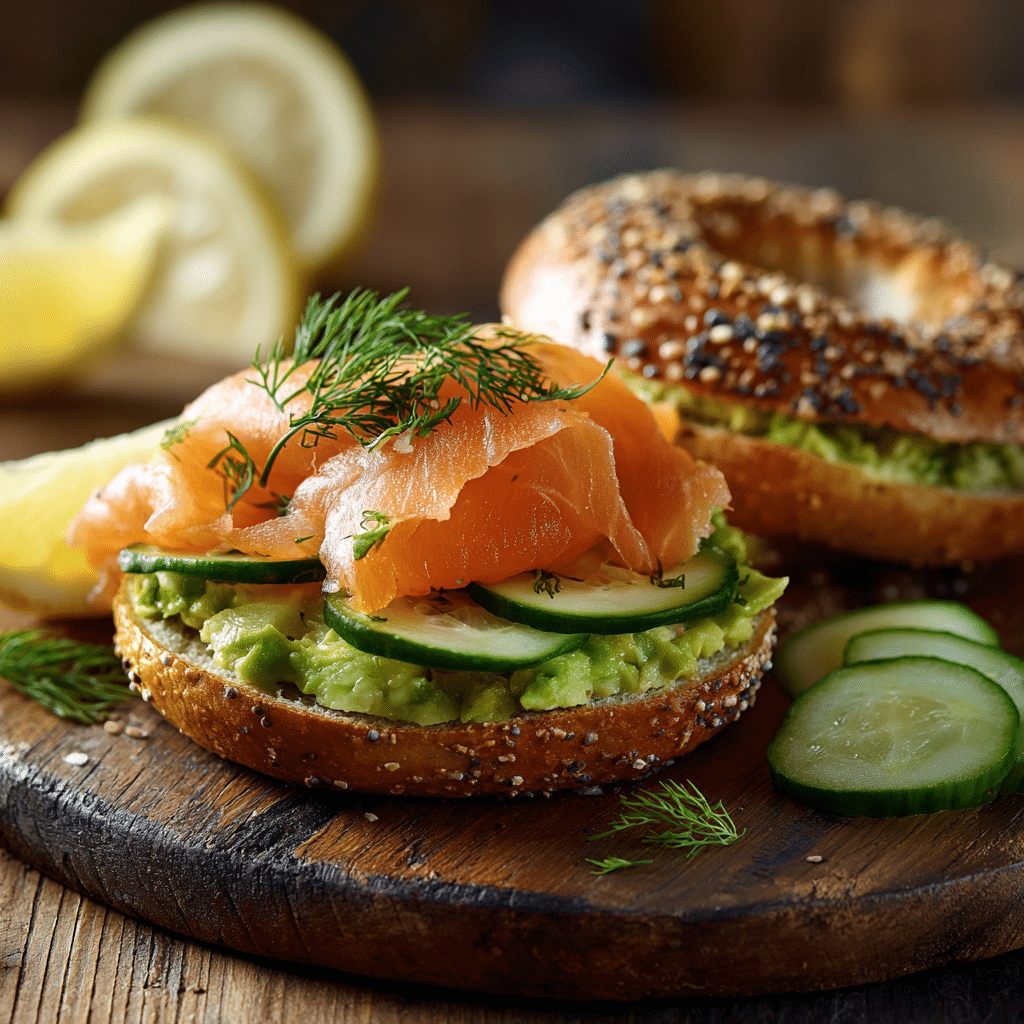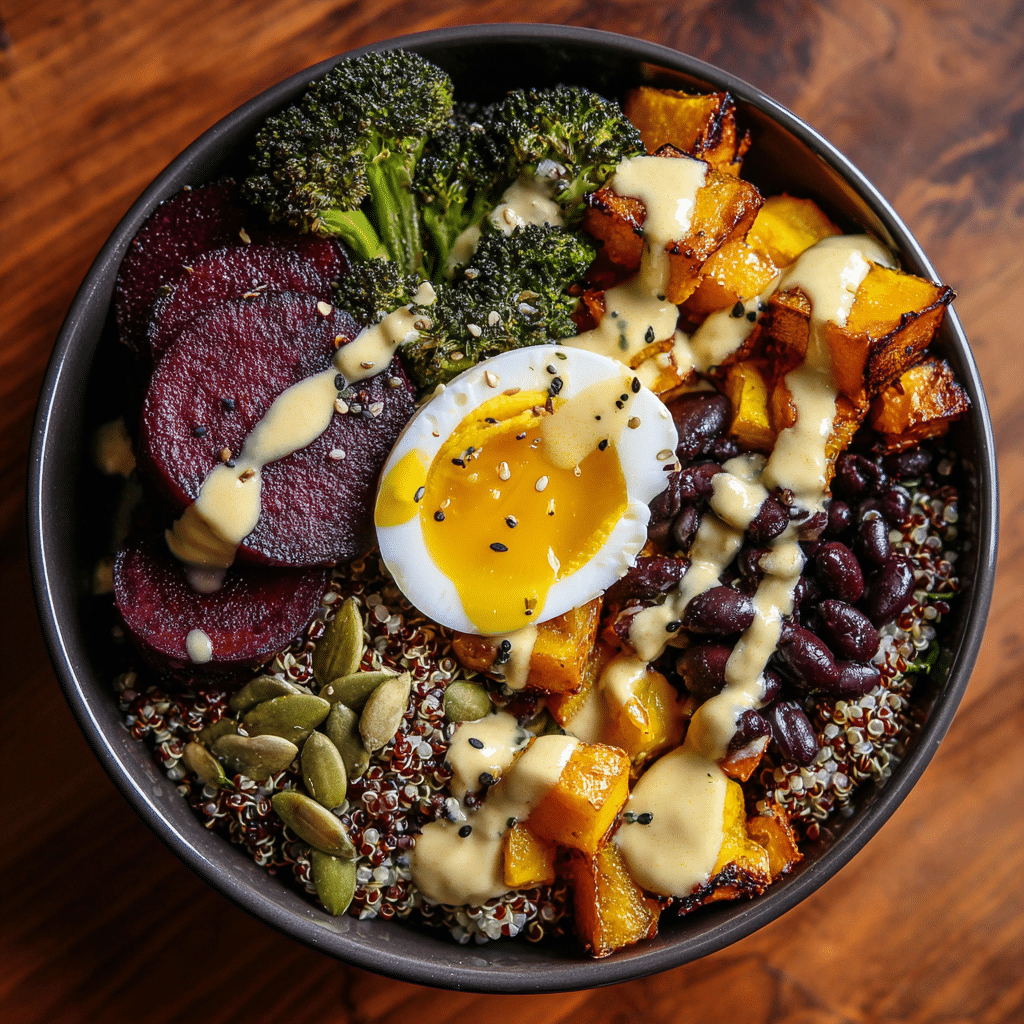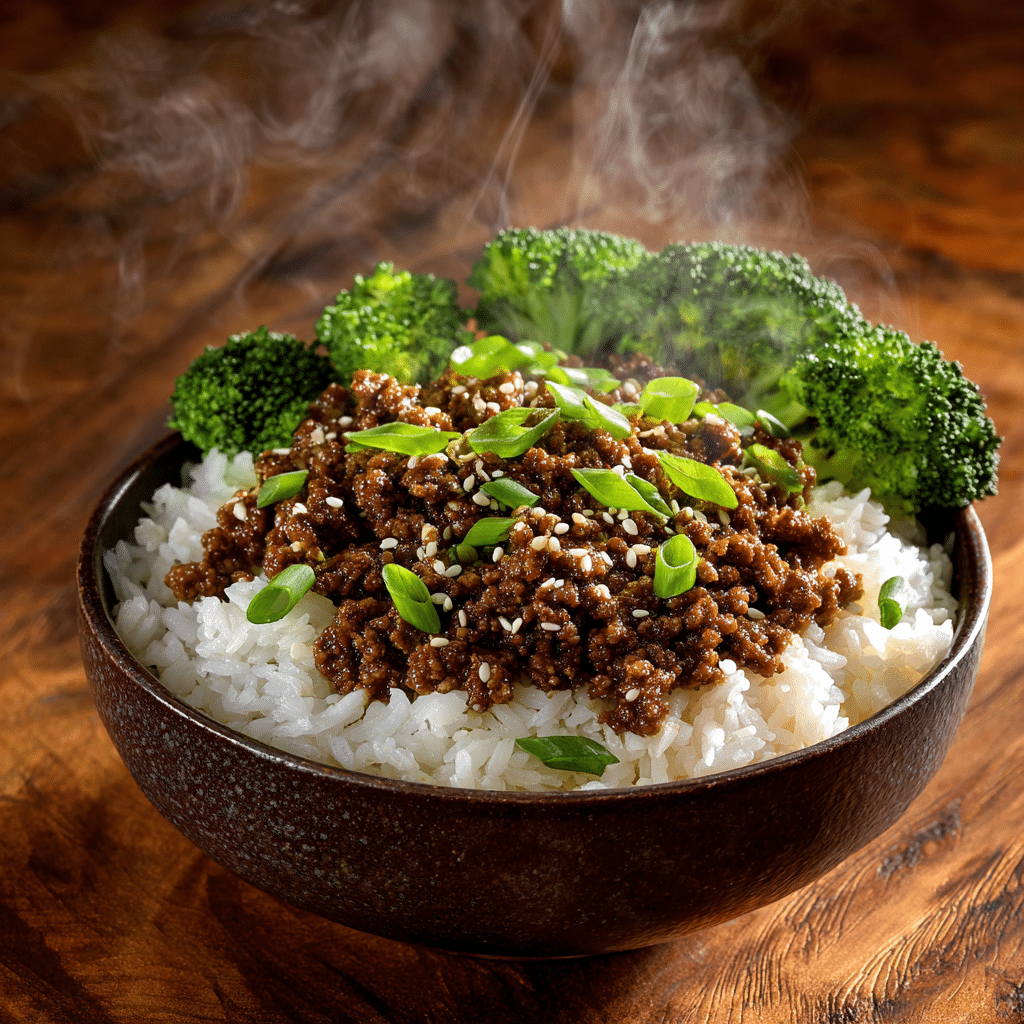Matcha pancakes are more than just a pretty green stack, they’re a breakfast rooted in wellness, flavor, and simplicity.
I’m Clara, the creator behind Cooking Inspired, and for me, cooking has always been about creating peace in the everyday chaos. Years ago, when I felt most out of place, I found a sense of belonging in the kitchen. That small space became my haven, a place where I could explore, create, and heal.
Now, I share those same feelings through quick, wholesome recipes designed for busy lives. These matcha pancakes are one of my favorite creations. They’re soft, subtly sweet, dairy-free, and powered by matcha, a superfood known for its antioxidants and calming energy. Plus, they’re ready in under 30 minutes, just like every recipe I craft here.
If you’re looking for a breakfast that’s as nourishing as it is beautiful, these matcha pancakes are a perfect start. Let’s dive into what makes them special.
Table of contents
Table of Contents
What Are Matcha Pancakes?
What Makes Matcha Pancakes Unique?
Matcha pancakes are a creative twist on the classic breakfast favorite, infused with finely ground Japanese green tea powder, matcha. The result? A naturally vibrant green hue, earthy-sweet flavor, and a subtle boost of caffeine that gently lifts your morning without the crash of coffee.
Unlike regular pancakes, matcha pancakes offer both aesthetic appeal and functional benefits. The green tea powder gives them a mild, grassy aroma that pairs beautifully with vanilla, maple syrup, or fresh fruit. They’re a fusion of indulgence and nutrition, comfort food that doesn’t weigh you down.
Whether you’re celebrating a cozy Sunday brunch or adding color to a weekday breakfast, matcha pancakes bring a refreshing touch that makes every bite memorable.
Don’t miss our Coconut Matcha pairing for a refreshing drink to balance the richness of the ribs.
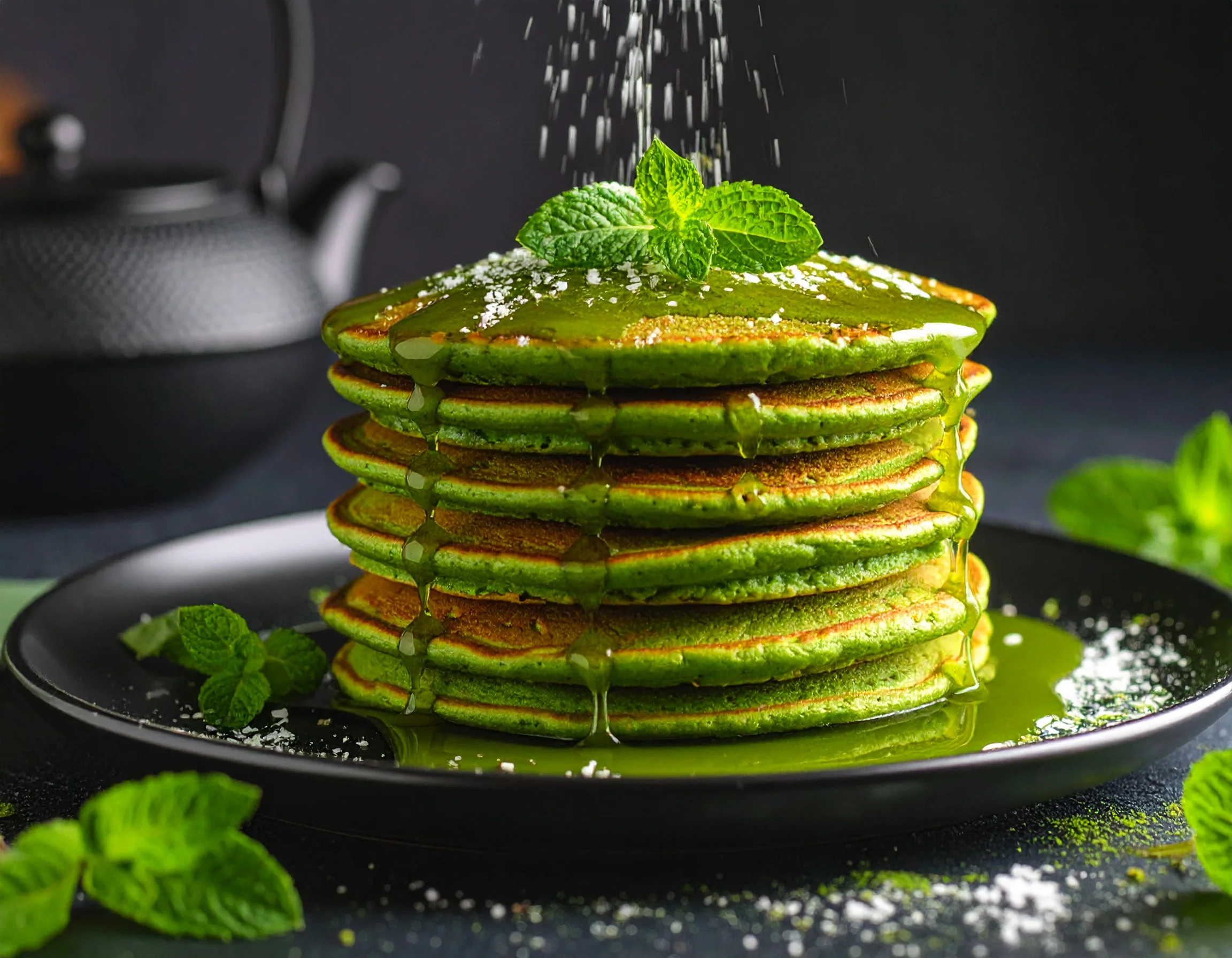

A Love Letter To Matcha Pancakes
Ingredients
Method
- 1. Mix together flour, baking powder, matcha powder, salt, and sugar in a large bowl.
- 1 ½ cups all-purpose flour,3 ½ teaspoons baking powder,1 teaspoon salt,1 Tablespoon sugar,1 Tablespoon Matcha powder
- 2. Whisk in melted butter, egg, almond milk, and vanilla. Stir until well combined. Let batter rest for 5 minutes.
- 3 Tablespoons butter,1 egg,1 ¼ cup almond milk,1 Tablespoon vanilla extract
- 3. Preheat a large skillet over medium-high heat. Spray with cooking spray (or use butter/oil as preferred). Pour batter into hot skillet, about ¼ cup of batter for each pancake.
- Cooking spray or similar
- 4. Cook 2 to 3 minutes, until bubbles appear on the sides and center of each pancake. Flip and cook until golden, about 1 to 2 more minutes.
Notes
Why Matcha Belongs in Your Morning Stack
Nutritional Benefits of Matcha Powder
There’s more to matcha pancakes than just their vibrant green color, they pack a powerful nutritional punch, too. Matcha is packed with powerful antioxidants, especially catechins, that help reduce inflammation and protect your body from harmful free radicals. The most potent catechin in matcha is EGCG (epigallocatechin gallate), a compound linked to improved heart health and enhanced metabolism.
Each serving of matcha offers a gentle caffeine lift, balanced by L-theanine, an amino acid that fosters calm focus without the usual jitters. This makes matcha an excellent alternative to coffee for sustained morning energy.
Here’s a quick look at some of matcha’s top nutritional benefits:
| Nutrient | Benefit |
|---|---|
| Antioxidants (EGCG) | Fights inflammation and supports immunity |
| L-theanine | Promotes focus and relaxation |
| Caffeine | Boosts energy in a sustained, balanced way |
| Vitamin C | Supports skin health and immunity |
| Chlorophyll | Natural detoxification |
When you fold this powerhouse ingredient into fluffy pancakes, you’re not just getting a tasty breakfast, you’re fueling your body with clean, wholesome energy.
Comparing Matcha Pancakes with Regular Pancakes
So how do matcha pancakes stack up against the traditional kind?
Let’s break it down:
| Feature | Matcha Pancakes | Regular Pancakes |
|---|---|---|
| Color | Natural green from matcha | Golden brown |
| Flavor | Earthy, mildly sweet with green tea notes | Neutral or slightly sweet |
| Nutrition | Rich in antioxidants & L-theanine | Lower in nutritional value |
| Energy Boost | Sustained, calm energy | Quick sugar rush, short-lived energy |
| Unique Factor | Visually striking and trendy | Classic comfort food |
The clear winner for wellness-minded eaters? Matcha pancakes. They combine comfort with clean ingredients and modern flair, without sacrificing flavor.
Whether you’re craving a healthier breakfast or looking for a new brunch idea, matcha pancakes bring more to the table than meets the eye.
Ingredients to Make the Best Matcha Pancakes
Core Ingredients You’ll Need
Creating the perfect batch of matcha pancakes starts with just a handful of simple, accessible ingredients, many of which you probably already have in your kitchen. Here’s what you’ll need:
- All-purpose flour (1½ cups): The base for structure and fluffiness.
- Baking powder (3½ tsp): Your leavening agent to get those sky-high pancakes.
- Salt (1 tsp): Just enough to balance the sweetness.
- Sugar (1 tbsp): A light touch of sweetness without overpowering the matcha.
- Matcha powder (1 tbsp): The star of the show! Choose culinary-grade matcha to unlock vibrant color and rich, earthy flavor in every bite.
- Melted butter (3 tbsp): Adds moisture and richness (use plant-based for dairy-free).
- Egg (1): Binds the ingredients and helps with fluffiness.
- Almond milk (1¼ cups): Light and dairy-free, adds subtle flavor.
- Vanilla extract (1 tbsp): Rounds out the earthy matcha with warm sweetness.
Each of these plays a vital role in balancing flavor, texture, and nutrition, especially the matcha, which needs just the right mix of fat and sweetness to shine.
Recommended Substitutes for Dietary Restrictions
Whether you’re vegan, gluten-sensitive, or just trying to cut back on sugar, matcha pancakes are flexible enough to accommodate:
| Original Ingredient | Substitution | Suitable For |
|---|---|---|
| All-purpose flour | Oat flour, gluten-free mix | Gluten-free diets |
| Butter (melted) | Coconut oil or vegan butter | Dairy-free, vegan |
| Egg | Flax egg or chia egg | Vegan |
| Almond milk | Oat, soy, or rice milk | Nut allergies |
| Sugar | Maple syrup, coconut sugar | Refined sugar-free diets |
These swaps won’t compromise taste, in fact, they can enhance the flavor and texture depending on your preferences. For example, using oat milk adds natural sweetness and body, while flax eggs give a slightly nutty touch that pairs well with matcha.
By mixing and matching, you can make these pancakes your own, all while keeping them energizing and satisfying.
Fun Variations of Matcha Pancakes to Try
Step-by-Step Instructions with Tips
Making matcha pancakes at home is quick, rewarding, and easier than you think. Here’s how to get that perfect stack, tender on the inside, golden on the edges, and just the right balance of earthy and sweet.
Step 1: Mix Your Dry Ingredients
In a large bowl, whisk together flour, baking powder, salt, sugar, and vibrant matcha powder until beautifully blended.
Dry Ingredient Checklist:
1½ cups all-purpose flour
3½ tsp baking powder
1 tsp salt
1 tbsp sugar
1 tbsp matcha powder
Step 2: Combine Wet Ingredients
In a separate bowl, whisk together the melted butter, egg, almond milk, and vanilla extract. Make sure the butter has cooled slightly before mixing to avoid scrambling the egg.
Wet Ingredient Checklist:
3 tbsp melted butter (or plant-based)
1 egg
1¼ cups almond milk
1 tbsp vanilla extract
Step 3: Combine and Rest
Pour the wet ingredients into the dry mixture and stir until just combined. The batter may be a bit lumpy — that’s okay! Overmixing can lead to tough pancakes.
Let the batter rest for 5 minutes. This allows the baking powder to activate and gives the flour time to absorb the liquids, resulting in fluffier pancakes.
Step 4: Preheat and Cook
Heat a skillet or griddle over medium heat. Spray with nonstick cooking spray or brush with a bit of oil or butter.
Scoop about ¼ cup of batter onto the pan for each pancake. Cook for 2–3 minutes, until bubbles begin to pop on the surface and the edges turn dry and slightly set.
Step 5: Stack, Serve, Enjoy
Repeat with the remaining batter. Stack your warm matcha pancakes high, add toppings (more on that soon), and enjoy immediately.
Common Mistakes and How to Avoid Them
Mistake 1: Overmixing the Batter
Result: Dense, rubbery pancakes.
Fix: Stir just until combined. A few lumps are normal.
Mistake 2: Skipping the Resting Time
Result: Flat pancakes that don’t rise.
Tip: Let the batter rest for at least 5 minutes, this helps it thicken and gives fluffier pancakes.
Mistake 3: Cooking on High Heat
Result: Burnt outside, raw inside.
Fix: Stick to medium heat and watch for bubbles before flipping.
Mistake 4: Using Too Much Matcha
Result: Bitter, overpowering flavor.
Fix: Stick to about 1 tablespoon per batch for the right balance.
By avoiding these common errors, you’ll be well on your way to fluffy, vibrant green pancakes that taste as good as they look.
Fun Variations of Matcha Pancakes to Try
Vegan Matcha Pancakes
Going plant-based? It’s easy to make vegan matcha pancakes that are just as fluffy and flavorful without using dairy or eggs. Here’s how to swap ingredients while keeping the structure and taste on point:
What to swap:
Egg → Flax Egg: Mix 1 tbsp ground flaxseed with 3 tbsp water. Let sit for 5 minutes to gel.
Butter → Coconut oil or vegan butter
Milk → Oat, soy, or rice milk
These pancakes have a slightly nuttier flavor and are a great option for dairy-free households or anyone eating more plant-based. Just don’t skip the vanilla — it’s key to balancing the earthy matcha.
Protein-Packed Matcha Pancakes
Need a morning protein boost? “Matcha protein pancakes are your energizing fix, perfect after a workout or to kickstart a busy day.
Power up with add-ins like:
– 1 scoop of vanilla or plain protein powder (just swap for ¼ cup of flour).
1 tbsp chia seeds or hemp hearts
Greek yogurt (for non-vegan options)
To avoid dry or rubbery pancakes, balance with extra almond milk or a mashed banana for moisture.
Gluten-Free Matcha Pancake Option
Sensitive to gluten? You can still enjoy delicious, fluffy gluten-free matcha pancakes without compromise.
Swap ideas:
Use a 1:1 gluten-free flour blend with xanthan gum
Swap in oat flour for a fiber-packed, heartier pancake, perfect when you want something cozy and satisfying. (Heads up: they’ll be a bit denser, but oh-so-good!)
Almond flour (combine with coconut flour for better binding)
Gluten-free versions often benefit from an extra egg or binder like flaxseed to improve structure.
Bonus Tips for All Variations:
Add chopped dark chocolate or blueberries to the batter for texture and flavor contrast
Sprinkle in cinnamon or cardamom for a warm, spiced twist
Top with coconut whipped cream or almond butter for more richness
These variations let you tailor your matcha pancakes to your taste, dietary needs, and mood — without losing the green goodness that makes this recipe a standout.
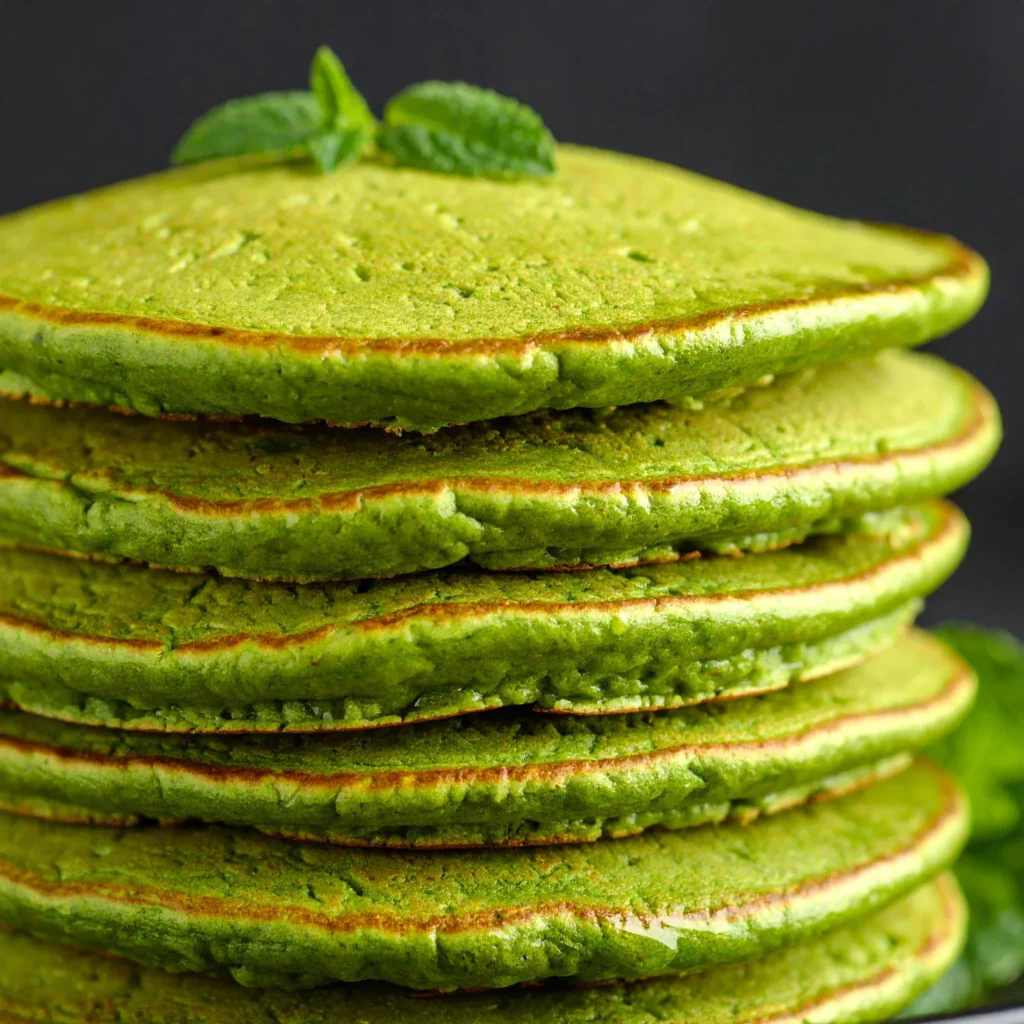
Toppings & Pairings That Elevate the Experience
When it comes to matcha pancakes, the toppings can make or break your breakfast moment. The subtle grassy bitterness of matcha pairs beautifully with sweet and creamy accents. Classic choices like fresh berries, a drizzle of pure maple syrup, or a dollop of coconut yogurt bring out the vibrant flavors.
For a more indulgent twist, try topping your pancakes with whipped cream infused with a hint of vanilla or a sprinkle of toasted nuts for added crunch. Be sure to sprinkle a light dusting of matcha powder on top to add a vibrant splash of color and a burst of flavor.
To drink alongside your stack, green tea or a light jasmine tea enhances the earthy notes, while a creamy oat milk latte or a freshly squeezed citrus juice offers a refreshing contrast.
Matcha Pancakes for Special Occasions
Looking to impress at brunch or celebrate a special day? Matcha pancakes bring both elegance and a burst of color to your table.
For St. Patrick’s Day, they fit perfectly into the festive green theme—try pairing them with shamrock-shaped fruit cutouts or a mint-infused syrup. For a more upscale brunch, serve your matcha pancakes stacked high with edible flowers, a drizzle of white chocolate sauce, and a side of seasonal fruit compote.
With just a few thoughtful touches, matcha pancakes become more than breakfast — they turn into a celebration of flavor and style.
Storing and Reheating Matcha Pancakes
If you’re lucky enough to have leftovers, storing your matcha pancakes correctly is key to maintaining their fluffy texture and bright green color.
Place the pancakes in an airtight container, separated by parchment paper to prevent sticking, and refrigerate for up to 2 days. For longer storage, you can freeze them by wrapping each pancake individually in plastic wrap and then placing them in a freezer-safe bag.
When reheating, avoid the microwave if possible, it can make pancakes rubbery. Instead, warm them gently in a non-stick pan over low heat or toast them for a crispier edge. A quick steam with a damp towel can also revive moisture without sacrificing fluffiness.
For more recipes follow me in Facebook and pinterest.
Are Matcha Pancakes Healthy?
Yes! Thanks to matcha powder, these pancakes are packed with antioxidants, vitamins, and a gentle caffeine boost, making them a nutritious start to your day.
What Can You Not Mix with Matcha?
Avoid mixing matcha with dairy if you want to maximize its antioxidant absorption, but plant-based milks work wonderfully. Also, steer clear of overly sugary syrups that can mask matcha’s delicate flavor.
How Do You Add Matcha to Pancake Mix?
Simply sift matcha powder into your dry ingredients and mix well to ensure even distribution, this prevents clumping and keeps the color vibrant.
Is There a Downside to Matcha?
Matcha contains caffeine, so excessive consumption may cause jitters or insomnia. Moderation is key!
Is It OK to Eat Matcha Everyday?
For most people, yes! Daily intake can provide steady antioxidants and calm energy, but listen to your body and consult a healthcare provider if unsure.
Is Matcha OK for Weight Loss?
Matcha can support weight management by boosting metabolism and providing sustained energy, but it’s best paired with a balanced diet and regular exercise.


